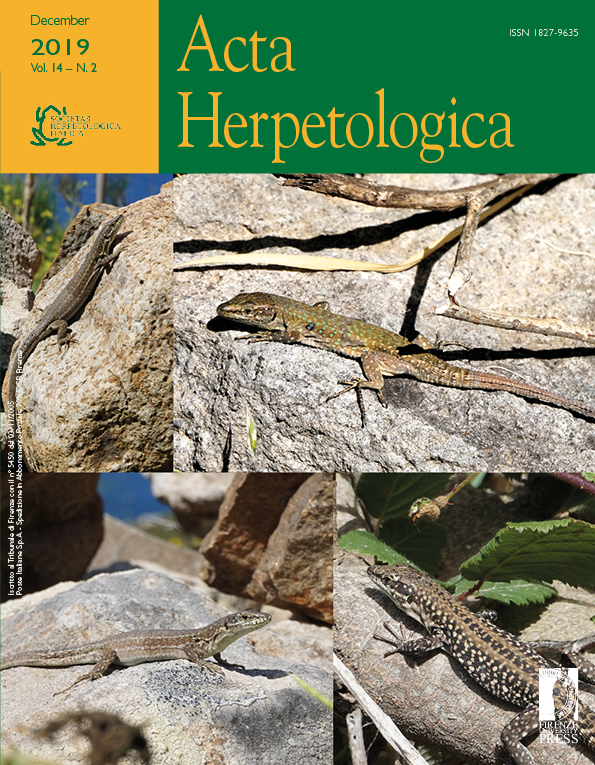Published 2019-12-27
Keywords
- Ecophysiology,
- morphology,
- locomotion,
- Lacertidae,
- Cyprus
How to Cite
Abstract
Environmental factors may affect animal performance in diverse ways, even among different populations of a single species. Here, we assess the impact of substrate type on the sprint performance (maximum speed and acceleration) of Schreiber’s fringe-fingered lizard (Acanthodactylus schreiberi). This species is a skillful runner that also bears micro spike-like protruding scales on its toepads (toe fringes), an adaptation for locomotion on sand. We worked with three populations living in habitats that differ in substrate type (sand, soil and rock). We measured sprint performance using a race-track with custom substrate platforms replicating the different substrate types. We formulated two hypotheses: first, we anticipated that the three populations would differ in their sprint performance due to the differences in substrate type; second, we expected that each population would perform better on its home substrate. Our results generally refuted the hypothesis that sprint performance would differ on different substrate types. Our results suggest that there is a restricted effect of substrate type on locomotion and indicate a multifactor interplay among alternative underlying parameters.






